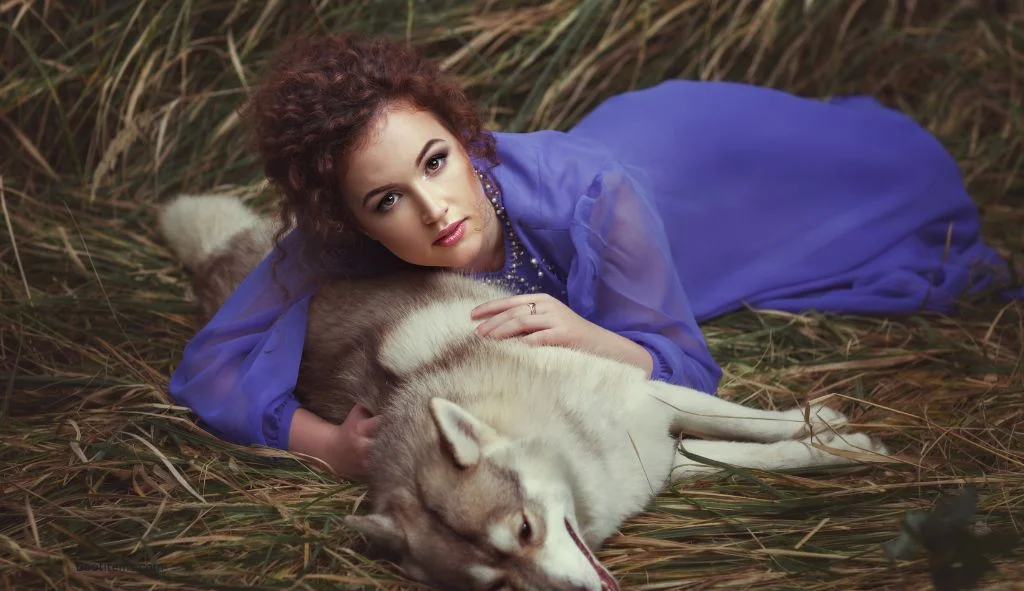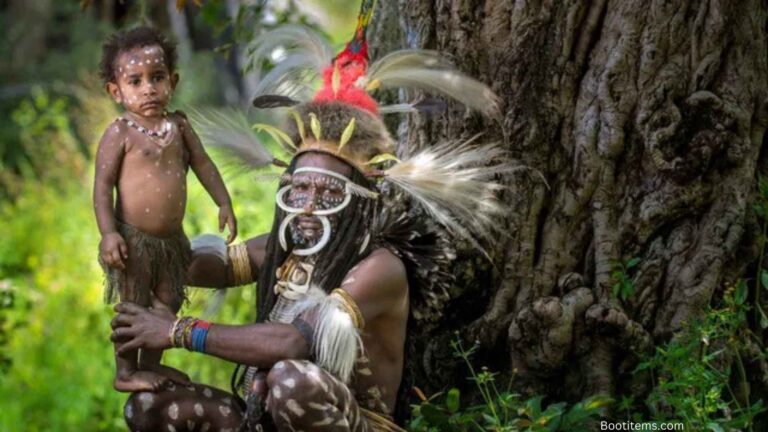Where Do Dogs Go When They Die: Afterlife Beliefs & Comfort
When dogs die, they may go to a spiritual realm like the Rainbow Bridge, return to nature through decomposition, or continue existing according to religious beliefs about animal afterlife.
The Rainbow Bridge Theory
The Rainbow Bridge is a comforting concept for many pet owners grieving the loss of their beloved dogs. This theory suggests that when dogs die, they cross over to a mythical overpass that connects heaven and earth. At this magical place, dogs experience complete rejuvenation and freedom from pain or suffering.
What is the Rainbow Bridge?
The Rainbow Bridge is described as a sunny, lush meadow where deceased pets wait for their human companions. According to this belief, dogs that have passed away find themselves in this beautiful setting where they can run, play, and enjoy themselves without any physical limitations or ailments that may have troubled them in their final days.
The concept of the Rainbow Bridge has become deeply embedded in pet loss culture. The phrase “crossing the Rainbow Bridge” is commonly used to refer to a pet’s death, offering a gentler way to discuss the painful reality of losing a beloved animal companion.
Origin of the Rainbow Bridge Concept
The Rainbow Bridge concept likely drew inspiration from the Bifröst Bridge in Norse mythology. In Norse legends, the Bifröst Bridge is a flaming rainbow bridge that connects Asgard (home of the gods) to Midgard (Earth).
The modern Rainbow Bridge poem that many pet owners find comfort in was written in the 1980s and 1990s. This poem describes how pets wait at the Rainbow Bridge until their human companions pass away, at which point they joyfully reunite and cross the bridge together to enter heaven.
An earlier literary reference to a similar concept appears in Margaret Marshall Saunders’ novel “Beautiful Joe’s Paradise,” which describes a meadow where animals recover from earthly suffering while waiting for their owners.

Scientific Perspective on Where Dogs Go When They Die
From a scientific standpoint, there is no definitive answer about where dogs go when they die, as science focuses on observable phenomena rather than spiritual matters.
Physical Process After Death
When a dog dies, its body undergoes natural biological processes. The heart stops beating, breathing ceases, and body temperature begins to drop. Within minutes, rigor mortis (the stiffening of muscles) begins to set in, followed by the natural process of decomposition.
If the dog is buried, its body gradually breaks down and returns to the earth. The basic components and nutrients that made up the dog’s physical form are recycled back into nature, becoming part of the ongoing cycle of life.
If cremation is chosen, the dog’s remains are reduced to ashes through high-temperature incineration. These ashes can be kept in an urn, scattered in a meaningful location, or used in memorial items like jewelry or paperweights.
Scientific View on Afterlife
Science does not provide answers about the existence of souls or an afterlife, as these concepts fall outside the realm of empirical observation and measurement. The question of where a dog’s consciousness or spirit goes after death is considered a matter of personal belief rather than scientific fact.
Some scientists and psychologists suggest that the perception of signs from deceased pets may be explained by the “reunion theory.” This theory proposes that grief evolved as a mechanism to encourage people to physically search for missing loved ones. This unconscious searching may lead to “false recognition” where grieving pet owners interpret similar sights, sounds, or smells as signs from their departed pets.
Religious and Spiritual Beliefs About Where Dogs Go
Various religions and spiritual traditions offer different perspectives on what happens to dogs after they die.
Christianity and Dogs in the Afterlife
Traditional Christian doctrine has historically been ambiguous about whether animals have immortal souls that can enter heaven. The Bible doesn’t explicitly state whether dogs or other animals have an afterlife.
Some Christians point to biblical passages like Isaiah 11:6-8 and 65:25, which describe animals in God’s eternal kingdom, suggesting that animals will be present in the afterlife. These verses depict a peaceful coexistence of various animals in the future world that God has promised.
Other Christians believe that since animals are part of God’s creation and are mentioned in descriptions of heaven, they will be present there. Pope John Paul II once stated that “animals possess a soul,” suggesting that they may have a place in the afterlife, though this view isn’t universally accepted within Christianity.
Buddhism and Reincarnation of Dogs
In Buddhist belief, all sentient beings, including dogs, are part of the cycle of rebirth known as samsara. According to this tradition, when a dog dies, its spirit remains on Earth for seven days, during which time it may visit loved ones it left behind.
After this period, the dog’s spirit enters a new body and begins a new life based on the karma accumulated in its previous existence. This reincarnation isn’t limited to returning as another dog—the spirit could be reborn as any living being, including a human.
Some Buddhists believe that a dog with good karma may be reborn as a human in its next life, which is considered a step toward enlightenment. The cycle of rebirth continues until the being achieves enlightenment and breaks free from the cycle.
Hinduism and Animal Souls
Hindu beliefs generally equate the souls of animals with those of humans. In Hinduism, all living beings have an atman (soul) that is part of the universal divine essence.
When a dog dies, its atman leaves the body and, like humans, enters the cycle of reincarnation. The form of the next life is determined by karma accumulated in previous lives. A dog that lived a good life might be reborn into a higher form in its next incarnation.
Some Hindu traditions include rituals for deceased pets similar to those performed for humans, acknowledging the spiritual significance of all living beings.
Signs Your Dog is Nearing the End of Life
Understanding the signs that a dog is approaching the end of its life can help pet owners provide comfort and make informed decisions during this difficult time.
Physical Signs of a Dog’s Approaching Death
Dogs nearing the end of life often show decreased appetite and thirst. They may refuse food and water entirely or eat and drink very little. This change can be due to discomfort, nausea, or simply a lack of energy to eat and drink.
Extreme lethargy is another common sign. Dogs may spend most of their time sleeping or lying down, showing little interest in activities they once enjoyed. Their sleep patterns might change, with more sleep during the day and restlessness at night.
Physical changes may include labored breathing, decreased body temperature, and incontinence. Some dogs experience muscle tremors or twitching as their bodies begin to shut down.
Behavioral Changes Before Death
Many dogs exhibit behavioral changes as they approach death. Some become increasingly clingy, seeking constant companionship and reassurance from their owners. This behavior can be interpreted as a way of seeking comfort during a difficult time.
Conversely, some dogs prefer isolation as they near the end. They may hide or withdraw from family members, seeking quiet, undisturbed places. This behavior might be an instinctual response, as wild animals often isolate themselves when vulnerable.
Some dogs display restlessness, pacing, or changing positions frequently as they try to find comfort. Others may make prolonged eye contact with their owners, which some interpret as a form of communication or farewell.
Interestingly, some dogs experience a phenomenon known as the “last rally” or “last bloom,” where they have a sudden burst of energy before they pass away. This temporary improvement can be confusing for pet owners, sometimes giving false hope of recovery.
Coping with the Loss of a Dog
The grief experienced after losing a dog can be profound and is a natural response to the deep bond formed with these loyal companions.
Understanding Pet Grief
Pet grief is a legitimate form of mourning that can be just as intense as grieving for a human loved one. The bond between humans and dogs is unique and powerful, built on unconditional love, daily interactions, and mutual dependence.
The grief process may include stages similar to those experienced after human loss: denial, anger, bargaining, depression, and acceptance. However, these stages aren’t always linear and may vary in intensity and duration for each person.
Some people experience complicated grief after losing a pet, especially if the pet was a primary source of companionship or if the loss occurred during an already difficult time. This type of grief may require professional support to process.
Honoring Your Dog’s Memory
Creating meaningful ways to honor a deceased dog can help with the grieving process. Many pet owners choose to create a memorial, such as a garden stone, photo album, or special shelf with the dog’s collar, toys, and perhaps an urn containing their ashes.
Some people find comfort in writing about their experiences with their dog or creating artwork that captures their pet’s spirit. Others may choose to plant a tree or flower in their dog’s memory, creating a living tribute that continues to grow.
Donating to animal charities or volunteering at shelters in memory of a deceased pet can also be a meaningful way to honor their legacy while helping other animals in need.
Supporting Children Through Pet Loss
For many children, the death of a family dog may be their first experience with loss. It’s important to be honest with children about what has happened, using age-appropriate language rather than euphemisms that might cause confusion.
Allowing children to participate in memorial activities can help them process their grief. This might include drawing pictures, writing letters to their pet, or helping to choose a special place for burial or ash scattering.
Parents should validate children’s feelings of sadness and loss while reassuring them that it’s normal to feel upset when someone they love dies. Sharing personal beliefs about where dogs go after death can provide comfort, whether that involves concepts like the Rainbow Bridge or religious perspectives on animal afterlife.
What to Do When Your Dog Dies
When a dog dies, pet owners face practical decisions about handling their pet’s remains while also beginning to process their grief.
Options for Handling Your Dog’s Remains
Home burial is an option for those with suitable land, though local regulations should be checked as some areas prohibit pet burial. If choosing this option, the dog’s body should be wrapped in a biodegradable material and buried at least three feet deep to prevent disturbance by other animals.
Cremation is a common choice, available through veterinary clinics or dedicated pet crematoriums. Pet owners can choose between communal cremation (where multiple pets are cremated together and the ashes are not returned) or individual cremation (where the dog is cremated alone and the ashes are returned to the owner).
Some pet owners opt for taxidermy or freeze-drying to preserve their pet’s physical form, though these options are less common and more expensive.
Making Decisions About Euthanasia
Many dog owners face the difficult decision of whether to euthanize a suffering pet. This decision is deeply personal and should be made in consultation with a veterinarian who can assess the dog’s quality of life.
Some pet owners use quality-of-life scales to help make this decision, evaluating factors such as pain level, mobility, hygiene, happiness, and ability to enjoy favorite activities. When a dog’s suffering outweighs their joy, euthanasia may be the most compassionate choice.
If euthanasia is chosen, many veterinarians offer home visits to allow the dog to pass peacefully in familiar surroundings. Some clinics provide private rooms where family members can be present during the procedure.
Telling Children About a Dog’s Death
When explaining a dog’s death to children, honesty is important, though the explanation should be tailored to the child’s age and understanding. Using clear, simple language helps children understand what has happened without causing unnecessary confusion or fear.
Avoid euphemisms like “put to sleep” or “went away,” which can cause misunderstandings or anxiety. Instead, explain that the dog’s body stopped working and they died, which means they can’t come back.
Allow children to ask questions and express their feelings about the loss. Some children may want to participate in saying goodbye to the dog or in memorial activities, while others may need time to process the information before engaging with the loss.
Experiences of Seeing or Sensing Deceased Dogs
Many pet owners report experiences of seeing, hearing, or sensing their deceased dogs after death, which can bring both comfort and questions.
Common Experiences After a Dog’s Death
Some people report seeing glimpses of their dog out of the corner of their eye or hearing familiar sounds like collar tags jingling, nails clicking on the floor, or the thump of a dog jumping onto the bed. These experiences often occur in places where the dog regularly spent time.
Others describe feeling their dog’s presence, such as the sensation of a dog leaning against their leg or lying on the bed beside them. These physical sensations can feel remarkably real and specific to the individual dog’s habits.
Dreams about deceased pets are also common and can feel particularly vivid and meaningful. Many people report dreams where their dog appears healthy and happy, which they interpret as reassurance that their pet is at peace.
Scientific and Psychological Explanations
From a scientific perspective, these experiences may be explained by the brain’s pattern recognition abilities combined with grief. The brain is constantly processing sensory information and may interpret ambiguous stimuli in familiar ways, especially when primed by grief and the expectation of seeing a recently deceased pet.
The “reunion theory” suggests that grief evolved as a mechanism to encourage searching for missing loved ones. This unconscious searching may lead to heightened awareness of any stimuli that could be associated with the lost pet.
These experiences may also be understood as a natural part of the grieving process, where the mind creates connections to the deceased as a way of processing the loss and maintaining bonds.
Spiritual Interpretations
For those with spiritual beliefs, these experiences may be interpreted as actual visits or signs from their deceased dogs. Many people find comfort in the idea that their dog’s spirit or energy continues to exist and can occasionally make contact with the living.
Some spiritual traditions suggest that animals may serve as guides or guardians after death, returning to check on their human companions or to provide comfort during difficult times.
Whether these experiences are understood as psychological phenomena or spiritual visitations, they often provide comfort to grieving pet owners and can be an important part of the healing process.
Best College Baseball Uniforms
Frequently Asked Questions
Do dogs have souls?
The question of whether dogs have souls depends largely on one’s spiritual or religious beliefs. Many spiritual traditions affirm that animals, including dogs, do have souls or some form of spiritual essence.
From a scientific perspective, the concept of a soul falls outside the realm of empirical observation. However, many people who have formed deep bonds with dogs feel certain that their pets possess something beyond mere physical existence—a unique personality, emotional capacity, and consciousness that suggests the presence of a soul.
Some religious traditions make distinctions between human souls and animal souls, while others view all souls as essentially similar. In many indigenous spiritual traditions, animals are seen as having spirits that are equal in importance to human spirits.
Will I see my dog again after I die?
Whether you will see your dog again after death depends on your personal beliefs about the afterlife. Many religious and spiritual traditions offer hope for reunion with beloved pets.
The Rainbow Bridge concept specifically promises a joyful reunion where pets wait for their owners before crossing together into heaven. Many Christians who believe in heaven also believe they will be reunited with their pets there.
Traditions that include reincarnation suggest that souls that shared strong bonds might seek each other out in future lives, though not necessarily in the same forms. Some people find comfort in the idea that the energy or essence of their relationship with their dog continues beyond physical death, regardless of the specific form a reunion might take.
How long does grief for a dog typically last?
The duration of grief after losing a dog varies widely among individuals. Some people begin to feel better within weeks or months, while others experience grief that lasts for years.
Factors that can influence the duration of grief include the strength of the bond with the dog, the circumstances of the dog’s death, the presence of other pets or support systems, and the individual’s general coping mechanisms and emotional resilience.
The grief process isn’t linear and may include periods of improvement followed by setbacks, especially around significant dates like the anniversary of the dog’s death or holidays when their absence is particularly felt.
Rather than focusing on a timeline for “getting over” the loss, many grief counselors suggest that people aim to integrate the loss into their lives while finding ways to honor their dog’s memory and the continuing bond they feel with their pet.

Samantha Yates is a creative writer and journalist with expertise in content creation and editing. She holds an MA in Creative Writing and brings professional experience from Lionbridge, where she developed engaging content for leading technology companies







